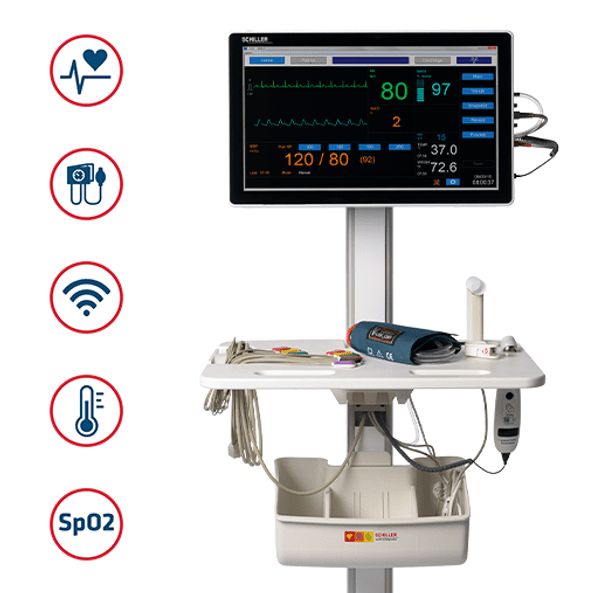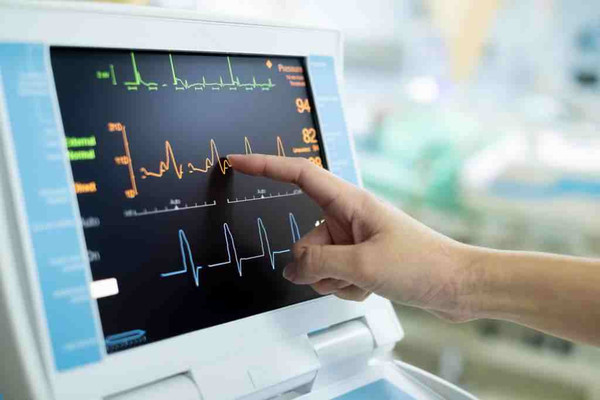Improving Cardiac Diagnostics: Enhancing Electrical Signal Detection for EKG Machines
An electrocardiogram (EKG/ECG) is an essential piece of equipment for both routine exams and emergency department settings. As the Mayo Clinic explains, this common and painless test can quickly detect heart problems and monitor heart health.
Collecting an accurate EKG reading is essential to helping monitor patients and detect life-threatening conditions. However, there are many factors that can hinder or enhance the quality of the electrical signals reaching the machine.
Read on to learn more about how an electrocardiogram works and what enhances the detection of electrical signals by the EKG machine.
How Does an EKG Machine Work?
Simply put, an EKG analyzes cardiac rhythms thanks to electronic signals. According to Johns Hopkins Medicine, small, plastic patches, called electrodes, are placed at certain spots on the chest, arms, and legs. They are connected to the EKG machine by lead wires and the electrical electrical activity of the heart is then measured, interpreted, and printed out for a professional to analyze.
The EKG machine can show how fast the heart is beating in addition to its rhythm, strength, and timing of the electrical impulse. Any abnormalities may signal a heart-related condition.
An EKG only signals electrical activity, and no electricity is actually sent into the body. This is what makes it a painless test.
Importance of Quality EKG Results
As we said, EKG results are important to signal certain heart-related conditions. But that is just scratching the surface of why quality EKG results are essential to patient health outcomes.
The health experts at Mount Sinai emphasize that many different heart conditions can show up on an EKG, including:
- Damage or changes to the heart muscle
- Changes in the amount of electrolytes (such as potassium and calcium) in the blood
- Congenital heart defect
- Enlargement of the heart
- Fluid or swelling in the sac around the heart
- Inflammation of the heart (myocarditis)
- Past or current heart attack
- Poor blood supply to the heart arteries
- Abnormal heart rhythms (arrhythmias)
As you can see, an accurate EKG is critical in providing a potentially life-saving diagnosis and timely patient treatment. If EKG quality is poor, it can result in false alarms or inhibit the ability for an accurate reading. This can delay treatment and result in unnecessary troubleshooting which hurts patient outcomes and mitigates the efficiency of your team respectively.

How to Enhance Electronic Signals to EKG Machines
That being said, there are a handful of ways to enhance the detection of electrical signals to the EKG machine.
Proper Skin Preparation
Experts agree that proper skin preparation is one of the most important steps to take to ensure EKG tracing quality. To enhance the detection of electrical signals, it is essential that a patient’s skin is completely clean and dry.
It is best practice to clean a patient’s skin with alcohol (especially if it is sweaty, dirty, or oily) and let it dry before placing the electrodes.
Use of Quality Electrodes
Electrodes come in different shapes and sizes, some of which are better than others for enhancing the detection of electrical signals to the EKG machine. It’s important to only use electrodes that are designed for the monitor you are using
Similarly, look for electrodes that are recommended for your specific application. Those needed for ambulatory care may be slightly different from those used in a critical care unit or physician’s office.
Proper Electrode Application & Contact With Patient
The placement of the electrodes is also important. Ensure your team is educated on proper electrocardiogram lead placement. It’s a fairly straightforward process, but the symmetrical placement and proper contact allow for a more accurate reading.
Quality Equipment
Of course, we can’t overlook the importance of having quality equipment to perform this routine test. A diagnostic station is a must for providing results. The Schiller DS-20 0A.800015 Diagnostic Station - 12 Lead ECG offers speed, precision, and best of all, a single cleaning surface at the first point of contact with patients.
The Schiller 0A.108000 AT-102 CARDIOVIT G2 is another option that provides a reliable analysis of the EKG for both children and adults. Or, something more portable is the Midmark 4-000-0080 IQECG that instantly captures and analyzes the 10 seconds of ECG seen on screen.
There is also the Midmark 4-000-0062 IQecg Electrocardiogram that is designed with the physician and technician in mind to be easier to use and improve the clinical workflow. This comprehensive EKG works seamlessly with today’s top EMRs in a variety of healthcare IT environments to save time and improve outcomes. It’s an all-around high-quality piece of equipment that can streamline this important process while maintaining accuracy.
Ultimately, the best EKG for your practice depends on your budget and needs. High-quality equipment, combined with the knowledge to enhance the detection of electrical signals to the EKG machine, can help improve patient outcomes and efficiency across the board.
Browse our complete selection of electrocardiogram machines and equipment at affordable prices from brands you know and trust today.
Recent Posts
-
How to Set Up a Podiatry Clinic: What Equipment You Need
TL;DR: Setting up a podiatry clinic requires careful planning, from designing an accessible, comfort …11th Mar 2025 -
The Best Gynecologist Tables: The Complete Buyer’s Guide
TL;DR: Discover the top OB-GYN exam tables that enhance patient comfort and practice efficiency. Thi …7th Mar 2025 -
TaliMed Medical Equipment: 4 Best Affordable Products Your Practice
TL;DR: TaliMed offers affordable, durable medical equipment perfect for any medical practice. Key …21st Jan 2025




